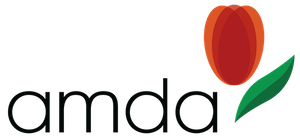Researchers from the Erasmus MC in Rotterdam, Netherlands, have succeeded in generating muscle cells from skin cells. This is significant as skin cells can be relatively easily obtained from a skin biopsy. The team developed a protocol to obtain pure muscle cells (ie without the presence of non-muscle cells) from skin cells, and they were able to expand these to large numbers of muscle cells. They have applied this general method to Pompe disease by generating large numbers of muscle cells from Pompe patients.
There are two important consequences of this work. First, because the muscle cells are derived from Pompe patients, they can be utilized to study Pompe disease in the laboratory and to test new therapies. In related work, the team has indeed used these muscle cells to test a possible novel treatment option that they recently developed: antisense oligonucleotides that can correct a very common genetic mutation that causes Pompe disease. In patient-derived muscle cells, the antisense oligonucleotides were able to close-to-fully correct the mutation (1, 2).
A second consequence of this work is that it creates the possibility of developing a muscle regeneration therapy. Muscle has a huge capacity to regenerate. Based on this known fact, the team is developing conditions in which patient-derived muscle cells generate new muscle in living, injured muscle tissue. Indeed, in these conditions the muscle cells generated by the team were able to form new human muscle, although the efficiency of this procedure still needs to be improved. In addition, they have combined this approach with the correction of the genetic defect using CRISPR-cas9. In their publication, the authors show that upon repairing the genetic defect, glycogen accumulation in muscle cells, a hallmark of Pompe disease, is prevented (3).
Much research is still needed before additional therapeutic options will be available. However, the team is actively working on the next steps. The team is now actively working on further development of antisense oligonucleotides for Pompe disease, and on building healthy, gene-corrected muscles from Pompe patient-derived skin cells.
The publications are freely accessible under the provided links.
(1) https://www.cell.com/molecular-therapy-family/nucleic-acids/fulltext/S2162-2531(17)30139-7
(2) https://www.cell.com/molecular-therapy-family/nucleic-acids/fulltext/S2162-2531(17)30140-3
(3) https://www.cell.com/stem-cell-reports/fulltext/S2213-6711(18)30154-1
